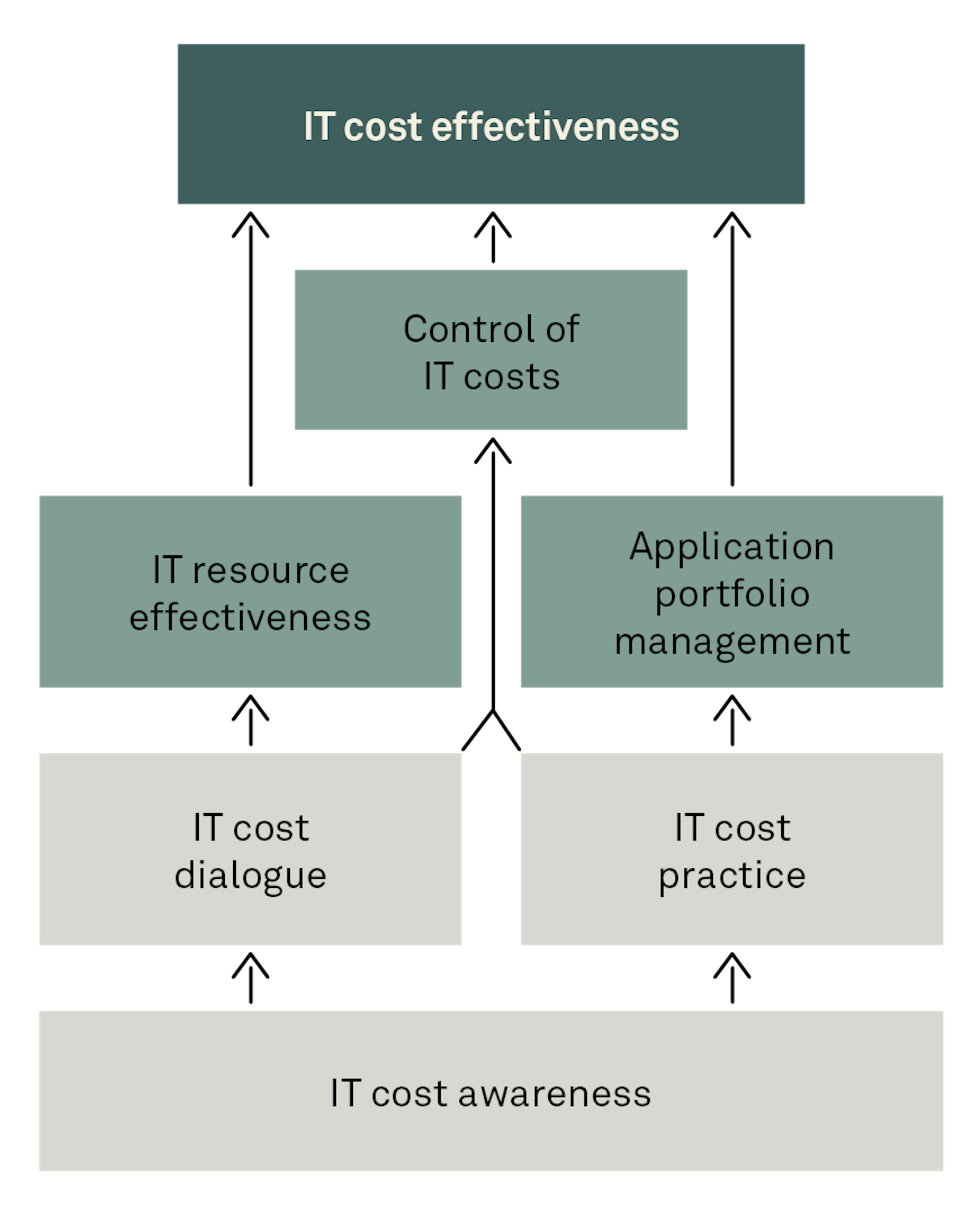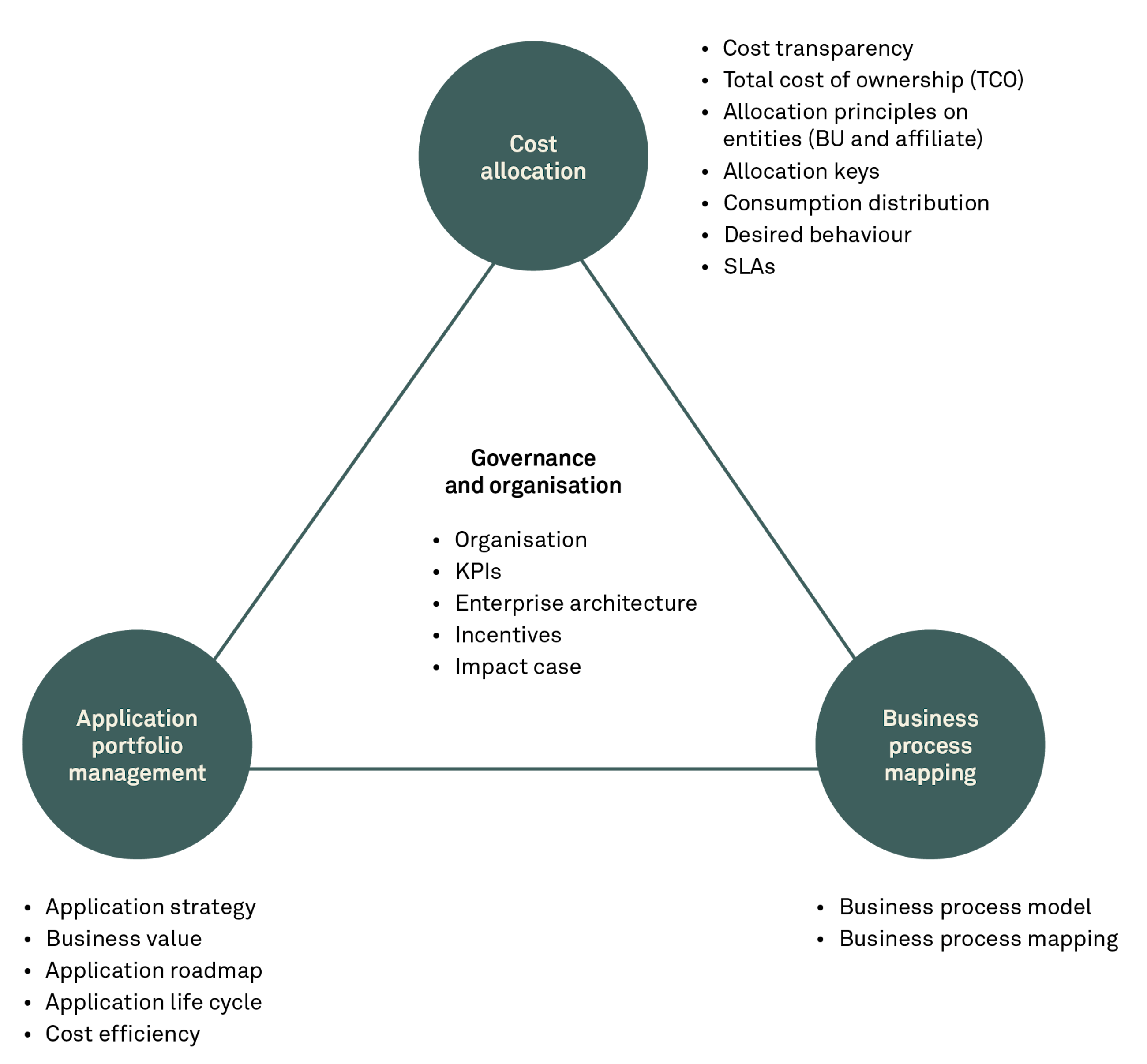from cost allocation and portfolio management
2 November 2019
Introduction
How to improve cost effectiveness and cost awareness through portfolio management and cost allocation
In this Viewpoint, we invite you to follow our approach to create value in the areas of the business where sourcing, procurement, IT and financial management take place. The value creation is centred around cost allocation and hereby relating consumers, requisitioners and functional purchasers of products and services to the actual cost base that is imposed by the purchase.
The idea in brief
The problem
Cost allocation drives procurement behaviour. Hence, lack of cost allocation may lead to suboptimal demand.
The argument
Effective control and execution of the cost allocation process pave the way for efficient demand management. Impact on a business level as well as on a behavioural level requires improvement of cost effectiveness and cost awareness through application portfolio and business process management as well as cost allocation practice.
The solution
It is critical to have the right governance and organisation in place to ensure cost-effective applications in a robust application portfolio that satisfies business needs. It is important to have an agile governance of the portfolio of application and process enhancement initiatives underway in the organisation to facilitate effective and fair chargeback (or showback) mechanisms.
When introducing a cost allocation initiative in an organisation, the purpose of this initiative should be stated clearly and be related to the value drivers creating the anticipated impact.
The initiative aims at improving IT cost effectiveness and facilitating the organisation’s capability and practices in relation to IT cost awareness.
This Viewpoint will examine how organisations can improve cost effectiveness, leading to a series of business and behavioural benefits (impacts).
Business impact includes:
- Better control of IT costs and IT spend
- Better use of IT resources
- Proactive management and utilisation of the portfolio of IT applications
Behavioural impact includes:
- A more comprehensive, fact-based and nuanced dialogue in the organisation on IT costs
- A thorough understanding of the IT cost practice
- A common IT cost awareness and understanding of what drives IT costs
In the following section we will address how you introduce IT cost and business value awareness in the organisation.
In order to emphasise the importance of change, we have elaborated the business and behavioural impact drivers.
Desired business impact:
- Control of IT costs to stabilise/reduce cost development
- IT resource effectiveness based on transparent and efficient KPI-driven IT cost allocation process through showback/chargeback of IT costs to top management and line of business
- Overview of the IT landscape and maturing of the IT landscape through application portfolio management, including application-specific development directions and prioritisation
Desired behavioural impact:
- Establish a culture of IT cost awareness due to understood and accepted cost allocation. The cost allocation will be based on a fair and transparent model, including change of business unit and affiliate behaviour with regard to ordering, maintaining and shut-down of applications/services due to cost focus
- Enhance IT cost dialogue based on business unit IT cost templates and adopt solid “explain or defend” rhetoric in reporting supporting a factbased IT cost dialogue in the organisation
- Develop ongoing IT cost practice with regard to data management, allocation, analysis, decision-making and management
The value drivers of the cost allocation can be related to exact key performance indicators (KPIs), which may govern the cost allocation initiative.
Co-creation – our preferred customer interaction form
For more than a decade, we in Implement Consulting Group has gradually developed our customer engagement and project approach, moving from expert advice towards a higher degree of customer involvement, and now has an elaborated and widespread co-creation practice as the DNA of the consulting practice. Hence, the customer has become an active and knowledgeable participant in a common process leading the engagement of the surrounding business network.
Co-creation was originally coined by the scholars Prahalad and Ramaswamy in their 2000 Harvard Business Review article “Co-Opting Customer Competence”. This idea has been developed further in their 2004 book The Future of Competition. Several other authors have contributed in this area.
Co-creation is an approach to customer interaction which emphasises the generation and ongoing realisation of mutual consulting firm-customer knowledge and value creation. An approach where the consulting firm’s and the customer’s resources and capabilities are combined and renewed to create value through new forms of interaction, service and learning processes. In essence, co-created value arises from personalised unique experiences with and for the customer.
In a cost allocation project, co-creation is introduced as having the customer involved in all activities from business need definition, process mapping and requirements development to design of application portfolio, data requirements, financial and application data retrieval, allocation mechanisms and mock-ups, in addition to change management preparation, development, testing and implementation, change management and further roll-out, impacting the execution speed, quality and value.
Structure of the Viewpoint
We see a clear interrelation between cost allocation and cost awareness and the possibility to utilise the cost insight in strategic decisions on application portfolio management and application life cycle – including applications’ coverage of selected business processes – and the overall governance of the organisation.
Each subject matter will be covered in the following sections.
Cost allocation will provide the organisation with the needed cost awareness and transparency to identify the true cost profile of all applications within the organisation.
This will lead to a more comprehensive analysis of each application’s value vs. costs in the organisation that – together with an assessment of business value and IT-strategic fit – will enable the organisation to develop their unique application portfolio roadmap according to business process coverage and other factors. Finally, we will discuss key governance principles concerning business process and application design and development.
In the following section we will address how you can control IT costs.
This Viewpoint focusses on IT projects and costs, while the interrelation between cost allocation, application portfolio management, business process mapping and governance is applicable to all types of business projects and the related expenditure.
Three cases are described in this Viewpoint, detailing situation and complications, cost allocation focus areas, methodology and process, business and behavioural impact and specific learning points from concrete projects.
The text above is an extract – you can download the entire Viewpoint at the top of the page.






